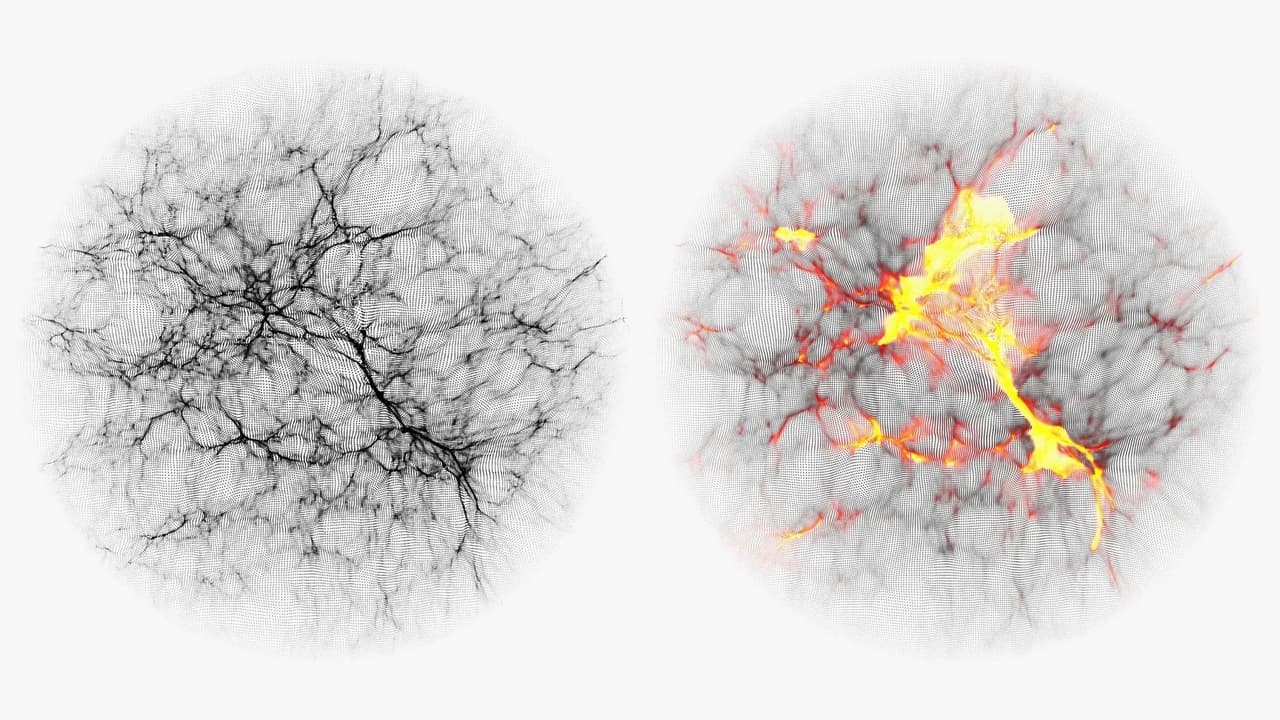Faint radio signals from the Universe’s dark ages could uncover how dark matter shaped the cosmos. Tel Aviv University scientists propose using lunar-based radio telescopes to detect these ancient cosmic whispers.
Scientists at Tel Aviv University have proposed an intriguing way to peer into one of the most mysterious chapters in cosmic history — the “dark ages” of the Universe, a time before the first stars lit up the sky.
According to new research published in Nature Astronomy, hydrogen gas that filled space about 100 million years after the Big Bang might have emitted faint radio signals influenced by dark matter. By studying these signals, scientists could gain rare insights into how dark matter behaved and clumped together long before galaxies and stars were born.
Dark Matter’s Hidden Imprint
The study, led by Professor Rennan Barkana of Tel Aviv University’s Sackler School of Physics and Astronomy, with Ph.D. student Sudipta Sikder and collaborators from Japan, India, and the UK, predicts that during the cosmic dark ages, dark matter wasn’t evenly spread out. Instead, it formed dense “nuggets” that pulled in surrounding hydrogen gas.
This gas, responding to the gravitational pull, emitted stronger radio waves than expected. Though incredibly faint, the combined effect of countless such signals across the sky could be detected with the right instruments — offering a potential new way to trace dark matter’s fingerprints.
“Our research focuses on an era even earlier and more mysterious than the one NASA’s James Webb Space Telescope studies,” said Prof. Barkana. “We’re looking at the Universe just 100 million years after the Big Bang — long before the first stars. These radio signals could help us understand how dark matter shaped everything that came after.”
The Moon: A Perfect Cosmic Listening Post
Detecting these ancient radio waves from Earth, however, is nearly impossible. Our atmosphere blocks such low-frequency signals, and human-made radio noise overwhelms the faint cosmic whispers.
That’s why researchers believe the Moon could play a key role. Its far side — shielded from Earth’s interference and free of atmosphere — offers an ideal environment for placing sensitive radio antennas.
With global space agencies racing to return to the lunar surface, including NASA, ESA, China, and India, scientists see a golden opportunity to build lunar radio telescopes aimed at exploring the Universe’s earliest epochs.
From Darkness to the First Light
When the first stars finally ignited — a phase called the “cosmic dawn” — their radiation likely intensified the existing radio emission. While signals from that later era are easier to detect with ground-based instruments, they are more complex to interpret because star formation adds many new variables.
To address this, astronomers are developing massive radio observatories such as the Square Kilometre Array (SKA) — a global project involving tens of thousands of antennas being built in Australia and South Africa. The SKA aims to map tiny fluctuations in cosmic radio brightness, effectively tracing where dark matter clumps once shaped the fabric of the young Universe.
Opening a New Window Into the Unknown
Dark matter makes up most of the matter in the cosmos, yet its true nature remains one of physics’ greatest mysteries. Today, it’s interwoven with galaxies and stars, making its behavior hard to isolate. Studying the pristine Universe before those structures formed could finally reveal its fundamental properties.
“Every time astronomers open a new observational window, the Universe surprises us,” said Prof. Barkana. “If we can detect these ancient radio waves, we may be able to listen to the very first cosmic broadcasts — and, in doing so, uncover the story of dark matter itself.”
